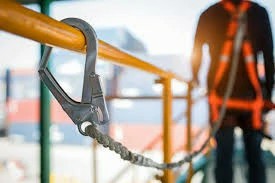Harnessing Tomorrow: The Impact of Cutting-Edge Technology on Working at Heights Training
In the world of workplace safety, the integration of advanced technologies has become a game changer, particularly in Working at Heights training. As industries evolve, the emphasis on creating safe work environments is paramount. Emerging tools, such as smart helmets, IoT sensors, and AI-driven risk assessments, are enhancing training effectiveness and reducing risks associated with working at heights. This blog explores these innovative technologies and their significant role in transforming safety training.
The Importance of Technological Integration in Safety Training
As businesses operate in increasingly complex environments, traditional safety training methods often fall short in addressing modern challenges. The introduction of technology aims to bridge this gap, providing interactive and data-driven solutions that improve training outcomes. Here are several reasons why technology is critical in Working at Heights safety:
- Real-Time Monitoring: Advanced technologies allow for continuous monitoring of worker activities, reducing the risk of accidents.
- Data-Driven Insights: The analysis of collected data can lead to insights that inform better decision-making and safety practices.
- Enhanced Engagement: Interactive training modules powered by virtual reality make learning more engaging for workers.
Innovative Technologies Shaping Working at Heights Training
1. Smart Helmets
Smart helmets are wearable devices equipped with sensors and augmented reality features that provide real-time feedback to workers. These helmets can:
- Detect Fall Risks: Integrated sensors monitor a worker's head position and proximity to edges, alerting them to potential dangers.
- Access Safety Information: Workers can receive instant access to essential safety protocols and emergency procedures through the helmet’s interface.
- Facilitate Communication: Real-time communication with team members enhances collaboration and quick responses during emergencies.
2. IoT Sensors
The Internet of Things (IoT) has made it possible to connect various devices for enhanced safety monitoring. IoT sensors in a working at heights context can:
- Monitor Environmental Conditions: Sensors can track weather conditions or changes in the environment, providing crucial information for deciding on safe working times.
- Track Worker Location: GPS-enabled sensors help ensure workers are where they are supposed to be, verifying compliance with safety protocols.
- Provide Alerts: Analyzing data from sensors can trigger alerts for unsafe conditions, helping prevent accidents.
3. AI-Powered Risk Assessments
Artificial intelligence offers a transformative approach to risk assessments within Working at Heights training. AI algorithms can analyze data from various sources to:
- Identify Potential Hazards: AI systems can predict risks before they become threats, allowing for proactive safety measures.
- Tailor Training Modules: AI can customize training content based on an individual’s experience level, ensuring workers receive relevant information.
- Evaluate Training Effectiveness: Continuous analysis allows for ongoing adjustments to training programs, ensuring they remain efficient and effective.
Implementing Technology in Working at Heights Safety Training
Implementing these technologies may seem challenging, but businesses can take strategic steps to incorporate them into their safety training programs:
- Conduct a Needs Analysis: Assess current safety protocols and identify areas where technology can enhance existing processes.
- Choose Reliable Partners: Collaborate with technology providers specializing in working at heights safety solutions.
- Incorporate Training: Ensure employees are trained on how to use new technologies effectively and understand their benefits.
- Monitor and Adjust: Continuously evaluate the effectiveness of implemented technologies and make necessary adjustments based on feedback and observations.
Real-World Examples of Successful Integration
Many companies have successfully integrated these advanced technologies into their Working at Heights training programs:
- Construction Firms: Several large construction companies are employing smart helmets and IoT sensors, reducing incident rates significantly.
- Maintenance Providers: Firms engaged in high-level maintenance are using AI-driven assessments to adjust their safety training dynamically.
Conclusion: A Safer Future Awaits
As we embrace these advancements, the potential for improved safety within the Working at Heights training landscape continues to expand. By leveraging technologies like smart helmets, IoT sensors, and AI-driven assessments, businesses can not only enhance training effectiveness but also cultivate a culture of safety that prioritizes worker well-being.
Ready to elevate your workplace safety standards? Explore our Working at Heights Course and contact us at [email protected] for more information on integrating technology into your training program today!



 349,500 Offered Certificates
349,500 Offered Certificates
 24/7 Online Training
24/7 Online Training
 Money Back Guarantee
Money Back Guarantee
 Fully Accredited Courses
Fully Accredited Courses
